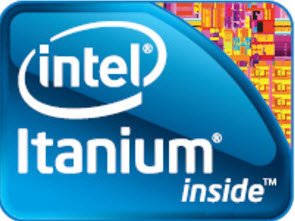Windows 64-bit Itanium explained
IA-64 uses the Intel Itanium architecture which is meant for high-performance Enterprise servers and computing systems. It was released in 2001 but its performance was not up to expectations, and it soon sunk like the Titanic – prompting some critics to refer to it as Itanic! On the other hand, AMD designed the x86-64 processor, which ran both 32-bit software at native hardware speed and offered support to 64-bit memory (AMD64). This is called as x86-64 or now simply as x64. x64 is actually a Microsoft term and stands for Extended 64. While initially, Microsoft did support the Itanium processor configuration, it later on, dropped Itanium support due to lack of market interest. The main problem with Itanium was that it was not backward compatible, in the sense that it was not able to run x86 software efficiently. It could run only x64 software. Subsequently, Intel too decided to introduce this x64 extension in its own x86-based processors. The Extended Memory 64 Technology or EM64T allowed processors like the Intel Xeon processor to permit 32-bit platforms to access larger amounts of memory supported by 64-bit platforms. It is this architecture that we are now using, as the 64-bit processor in our desktops and laptops. Microsoft Windows XP and Windows Server 2008 R2 were the last versions of the Windows operating system to support the Itanium. Later versions of Windows did not support 64-bit Itanium. Development of the Itanium versions of Visual Studio and SQL Server were also discontinued later on.
Am I running Windows 64-bit Itanium
Users running older operating systems, can if they wish, find out which systems they are running. To do so, open CMD type the following and hit Enter:
These are the possible values:
0 means x866 means Itanium9 means x64
Thus, when referring to 64-bit architecture, one technically has to be a bit more specific as there are two main 64-bit hardware architectures. The first real 64-bit architecture was released by Intel with this Itanium processor. What we are now using is the ‘backward compatible’ 64-bit extension to the 32-bit architecture, developed by AMD first – followed by Intel.

